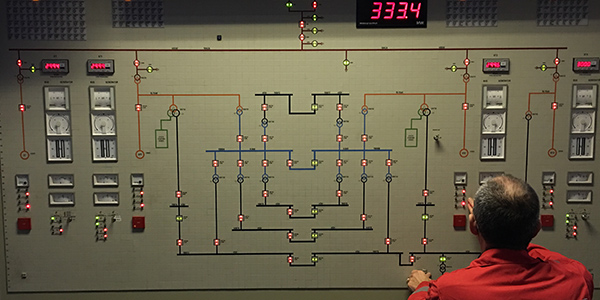NERC on Thursday opened a third formal comment period on the standard authorization request (SAR) for Project 2019-04 (Modifications to reliability standard PRC-005-6) following revisions by the drafting team aimed at addressing criticism received during the second round that closed in July.
Many respondents had indicated surprise at the proposed changes to PRC-005-6, which requires utilities to “document and implement programs for the maintenance of all protection systems, automatic reclosing and sudden pressure relaying affecting the reliability of the bulk electric system.”
Objectors included the North American Generator Forum (NAGF), which submitted the original SAR in May 2019 with the goal of clarifying the standard’s applicability to automatic voltage regulators (AVRs). (See AVR Standards Team Faces Industry Pushback.) In a comment endorsed by several other participants, the organization said the proposal had “evolved into a draft that the NAGF can no longer support” and requested that the drafting team “revert back to the original SAR as previously submitted.”

Team Tries to Calm Overreach Fears
According to NERC’s unofficial comment form, stakeholders are asked to respond to the following questions:
- Does NERC’s current definition of “protection system” create confusion with regards to protective functions embedded in control systems, as it omits protective functions in the excitation and other control systems?
- Should BES protective functions that respond to electrical quantities inside excitation systems be included in PRC-005, along with BES protective functions inside other control systems?
- Should PRC-005 provide for the use of alternative protection system station DC supply technologies, whether battery-based or not, and ensure that they are subject to maintenance requirements?
- Should entities registered as under-frequency load shedding-only distribution providers be considered as functional entities applicable to PRC-005?
- Are there any logistical or cost considerations that would add significant burden to equipment owners trying to confirm protective functions in an exciter, inverter or other control system, and are there more cost-effective solutions that the drafting team could consider?
These questions are largely identical to those in the last round, with the exception of the third, which substitutes “alternative” for “emerging.” However, the new draft SAR incorporates changes outlined by the drafting team in a previously published response to the industry objections.
Most of the criticism that the second draft received focused on respondents’ perception that it represented an unwarranted expansions of the project’s goals, particularly in its attempt to apply PRC-005 to control systems. As a result, the drafting team devoted a significant portion of its response to explaining why it believes such changes are needed and do not constitute overreach.
“The SAR drafting team does not intend to state that non-BES protective functions, such as those detecting malfunctions of the excitation system, are within the scope of PRC-005,” the team said in its comment on the definition of “protection system,” emphasizing that the expanded definition is meant to clarify that AVRs are included.
Similarly, the team’s approach to the second question focuses on the lack of clarity regarding BES protective functions in the current version of PRC-005. The drafting team was concerned that “only addressing traditional synchronous generator excitation systems was not fully addressing the potential reliability gaps in the interpretations of PRC-005 applicability to protective functions in all control systems.”
In response to industry objections, however, the draft SAR has been updated to emphasize that the standard will be applicable only to BES protective functions, meaning that protective functions inside excitation and control systems that do not “perform as a BES protection system” would not be included. The team also promised that industry comments will be forwarded to the future standard drafting team once the SAR is approved.
Other changes include clarifying that battery energy storage systems are not being considered for inclusion in PRC-005, and that the SAR’s mention of battery technologies is because DC supply technologies, whether they include batteries or not, are not currently included in the standard’s maintenance requirements. This came in response to a comment from Edison Electric Institute that said it was “unclear” whether the current standard already addressed such equipment.
Comments on the revised draft SAR are due by 8 p.m. Feb. 12.



